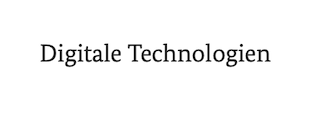greenProd
Energy-optimised production with green digital twins
In order to remain competitive in times of rising energy costs, companies need to work with optimised control concepts. To ensure a successful transformation in the manufacturing industry, it is essential to use renewable energy sources whenever possible.
This is what makes the greenProd project so important. The concept: green digital energy twins (gDET) as representatives for production steps, products and the systems for generating and storing renewable energy. In terms of processes, what this means specifically is: The gDETs allocate emissions to individual products and services throughout the various manufacturing steps. This makes it possible to trace emissions along the value chain. The gDETs also outline the energy consumption involved in the individual production steps. Moreover, they provide prediction models – for reliable forecasts on the use of green electricity such as wind power or solar energy, which can then be taken into account in production planning. This enables manufacturers to carry out energy-intensive work steps when green power is available in sufficient quantities. The greenProd team’s vision: optimised process planning for production steps along with any preliminary actions – to reduce the carbon footprint of the finished products.
In order for the vision to become a reality, information models in the form of preconfigured gDETs must be developed for the energy consumers, generators and storage systems that are used and integrated into the tools that are deployed.dig This requires standardised data models – in AutomationML format – and simplified automation software based on a domain-specific language (DSL). Defined interfaces are then used for programming. These interfaces enable the software tools involved to incorporate the gDETs into their tasks. As the range of consumers is relatively heterogeneous, corresponding ontologies are also used.
The intention is to make the project results available to other companies in the future: To this end, the research team is planning on developing a marketable solution for demand flexibilisation, load management and real-time control of energy flows. The medium-term objective is to make production more sustainable overall: The idea is to minimise the use of fossil resources, thereby reducing greenhouse gas emissions and helping to protect the climate. Functions that visualise economic and ecological parameters such as the carbon footprint make it easier for decision-makers in companies to make sustainable production decisions. The use of DSL and the provision of preconfigured gDETs should benefit SMEs in particular. The anticipated reduction in energy costs will likely translate into major competitive advantages for platform users.
Consortium:
- krumedia GmbH
- Eckerle Technologies GmbH
- Fraunhofer IESE
- Pforzheim University
- Recommend this page:
- Print view

